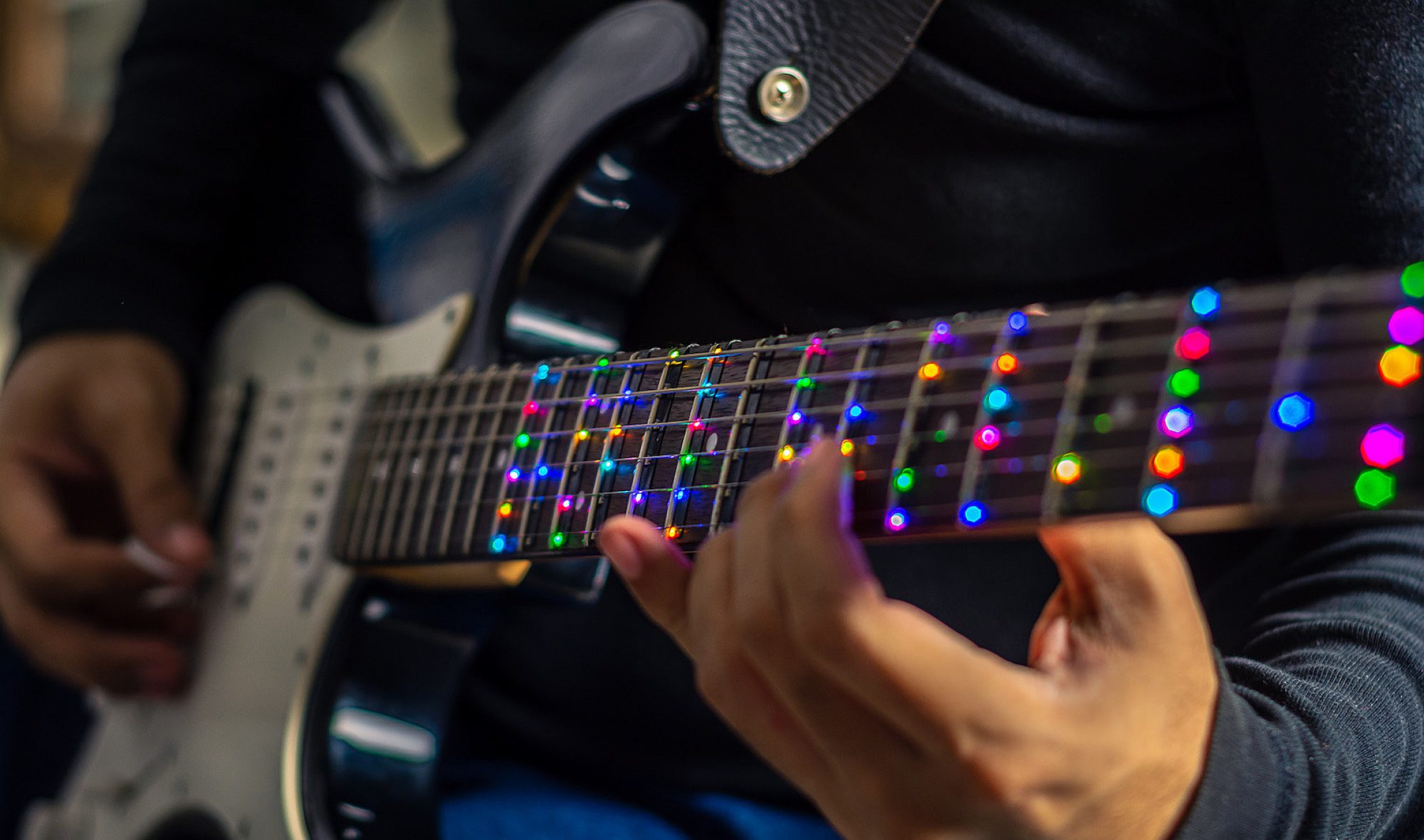This past week, we resolved a severe issue with the fret detection. This allowed us to integrate and verify fret detection from a software and hardware perspective. The pi hat PCB also arrived and was populated with components. The web interface was significantly improved with a visual indicator of the song. We also discussed priorities moving forward, especially on the web app front, and gearing up for the early demo next week. On the embedded side, fret and strum detection code were written and verified, and a first pass at the user experience (training mode) was written.
The following picture shows the Teensy4.0 and RPi connected via the Pi-Hat PCB that came in earlier this week.

The following picture shows the electronics in a 3d-printed housing:

This image shows the latest concept for what the web app will display while the user experience is running:

This image shows we can detect the fret that the user pressed on (the corresponding LED lights up)

As for priorities, we have determined that everyone shift focus towards integrating their parts with everything else because we are at the point where many of our tasks span more than a single person’s expertise. We have also determined that adding scrolling notes to the web UI is not a top priority since it is merely a visual add-on, and other core functionality still needs to be implemented, such as implementing the rest of the GPIO signals on the RPI.
